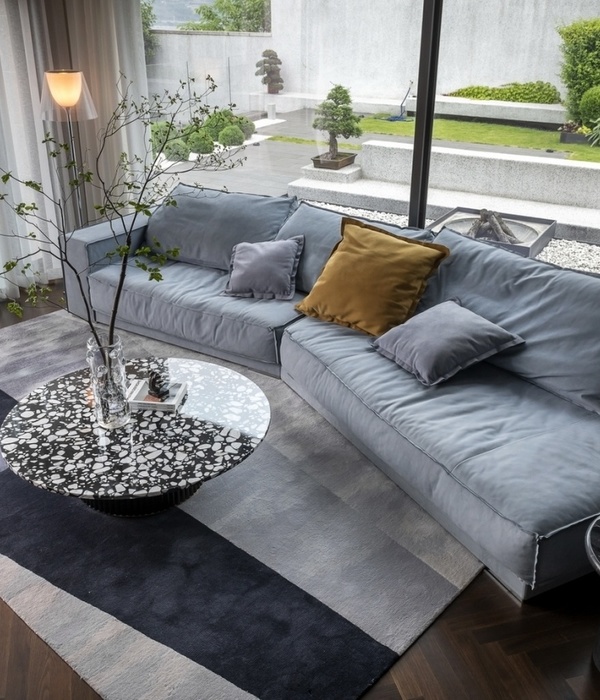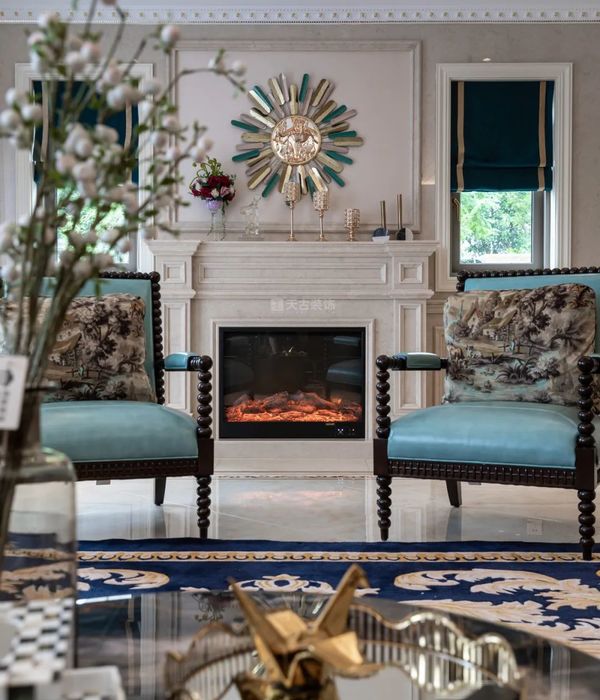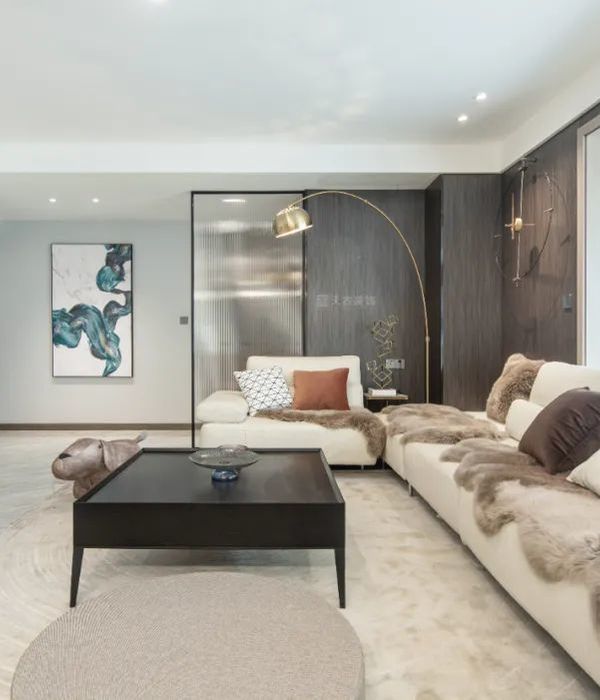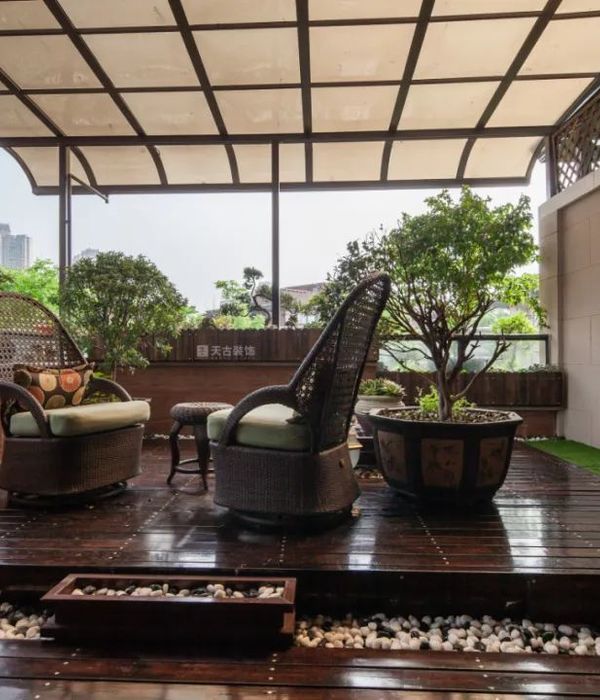Introduction: 事物——一个充满意义的世界
Introduction: Thing-The world of meaning.
背景 | The Background
“我们西方世界开始发现我们被忽视的感官。这种日益增加的意识代表了一种逾期的反叛,反抗我们在这个科技化的世界中感官体验被痛苦的剥夺。”1——Ashley Montagu
"We in the western world are beginning to discover our neglected senses. This growing awareness represents something of an overdue insurgency against the painful deprivation of sensory experience we have suffered in our technologized world."1 ——Ashley Montagu
这个社会总是需要一种抵抗的建筑学。抵抗的建筑学“抵抗”的不是技术本身,而是技术对感官体验的剥夺。在这个科技化的世界,我们变得越来越不敏感。例如一个经常使用手机和电脑的孩子对周边现实的反 应变得迟钝。对于建筑师来说,我们能做的是通过情感的 挖掘,使建筑更具互动性,使人们在空间中的感觉得到恢复。 社会和技术是在不断变化的,给予不断变化的技术无限的信任是值得令人怀疑的。尤其是当我们想要创造某种永恒性时,就必须与社会和技术保持一定的距离。保持一定的距离并不意味着忽视它们,而是获得更多的可能性和自由。我们理解技术的意义应该在于此!
康德说:美不是艺术品或自然现象的一种属 性,而是一种意识的愉悦,它伴随着想象和理解的自由。建筑学是创造空间和物体(object)。除了空间和物体的制造之外,建筑学还关注空间和物体的系统秩序、空间和物体的场景透视、空间和物体的感官体 验、在空间中和物体周围的运动等等。建筑必须具有吸引力,引人入胜,并在一定程度上具有象征性,以便人们能够与其产生关联。当我们面对建筑学时,什么将会激发我们去概念化建筑学的物体?对这些物体的感知和思考是关于物体与人的关系,从现象 学哲学的角度看,它是一个物体(object)变成一个事物 (thing)的过程。
This society will always need a kind of resistant architecture. What resistant architecture “resist” is not technology, it is about the technology deprives the sensation of us. For an architect what we can do is trying to make architecture be more interactive to revive the sensation of people in the space, by the mining of emotion.
“Beauty is not a property of an artwork or natural phenomenon, but is instead consciousness of the pleasure that attends the ‘free play’ of the imagination and the understanding.” ——Immanuel Kant
Architecture is making spaces and objects. And when we facing an architecture, what will trigger us to image and conceptualize the object of architecture? The perception and the thought of these object is about the relationship between object and people, From the perspective of the phenomenological philosophy, it is an object becomes a thing.
研究方法 |The Methodology
我的研究对象是柱子,它一直是建筑学的一个基本元素和语言,但实际上,柱子又是当代建筑学尝试去摆脱的。建筑师们努力去创造最大的无柱空间或者最细的柱子,这也是技术发展的一个结果。而我选择柱子作为研究对象也是对这种技术发展趋势的一种抵抗。使柱子成为一个事物,因为我们相信充满意义的事物能够超越时间。
研究方法:通过理论和案例学习来进行前期“研究”,通过制作拼贴进行“练习”来阐释理解,同时通过项目来反思和“实践”。
My research object is the column, the column is what contemporary architecture has been trying to abandon. There are many architects trying to create the largest column-free space or the slenderest column.And my choice of column is also a resistance to this trend of technology development.
The methodology, researching about theory and case study, and making collages as training to interpret, and also doing a project to rethink and practice.
目的 |The Intention
主要的目的就是尝试让建筑更具有互动性,以唤起人们在空间中的感官。但同时,这种研究对象或者物体可以超越建筑学的范畴,它的边界是无穷无尽的。无穷无尽的物体组成了这个世界,在与人的互动中产生了无穷无尽的意义,构成了这个充满意义的世界——事物。
The main intention is trying to make architecture be more interactive to revive the sensation of people in the space. Infinite objects constitute the world. In the interaction between objects and humans, it is a world of meaning – thing.
章节注释:1 Francesca Bacci, David Melcher, (2011). Art and the Senses. p.589.
2 Kant’s general discussions of the distinction between “cognition” and “conscious of” are also given in the Critique of Pure Reason (notably A320/B376), and section V and the conclusion of section VIII of his Introduction in Logic.
3 EL croquis, No 156, (2011). Valerio Olgiati (1996-2011), p.31.
4 EL croquis, No 156, (2011). Valerio Olgiati (1996-2011), p.31.
1. 事物理论 |Thing theory
"You liked asking questions as a child. Insistently digging. But you were curious about the wrong things."
"They were my things, not yours."
1.1 马丁·海德格尔 ——什么是事物 | Martin Heidegger’s What is a Thing.
事物理论(Thing theory )是批评理论的一个分支,它关注文学和文化中的人与物的相互作用。它借用了海德格尔对物体(objects)和事物(things)的区分,他认为当一个物体(object) 不再为它的通常功能 服务时,它就变成了一个事物 (thing)。当 一个物体发生故障或被误用时,它就会摆脱 它的社会编码价值,并通过中止习惯以新的 方式呈现在我们面前。1 海德格尔指出,事物(things)的特殊性似乎完全取决于它们的空间和时间。如果两个事物是相似的,但这个事物和那个不一样,只是因为它现在在这里,而另一件在那里, 或者是以后在这里出现。
Thing theory is a branch of critical theory that focuses on human–object interactions in literature and culture. It borrows from Heidegger’s distinction between objects and things, which posits that an object becomes a thing when it can no longer serve its common function. When an object breaks down or is misused, it sheds its socially encoded value and becomes present to us in new ways through the suspension of habit. Heidegger shows that the particularity of things seems to depend completely on their space and time. If two things are alike, this one is different from that one only because it is here now, while the other is there, or is here later.
是空间和时间使平凡的事物变得特殊。2空间和时间是在人与人所指出、定位和具体化的事物的相遇中产生的。空间和时间是在我们与事物的相互作用中产生的。它缺乏一个持久的真相,只是它与我们之间不断变化的关系。因此,我们与事物相互作用的时间和空间方面并不足以决定一个事物。必须考虑第二个主要问题 :给予(givenness) 和概念实际上都是我们和事物之间的相互作用,因为给予(givenness) 是它们遇到我们的方式,而特征的概念化是我们决定和定义它们的方式。3因此“‘这’是什么“并不取决于我们的任性和快乐。“它是什么取决于我们,但“它同样取决于事物”。这种“之间”并不是说我们和事物可以先分开存在,然后再相互作用。更确切地说,一个人总是已经拥有了假定事物的能力,而一个事物已经是遇到的东西了。一个事物是什么,总是取决于它与我们的某种相互作用,取决于它所处的某种真相。4
It is space and time that make ordinary things particulars.Space and time are generated in the encounter between man and the things that humans point out, locate, and make specific.The temporal and spatial aspects of this interplay “between” us and things is not alone sufficient to determine a thing. A second major consideration must be taken up both givenness and concepts are really interplays “between” us and things, for givenness is their mode of encountering us, and the concepts of traits are our way of determining and defining them.
Thus, “What a ‘this’ is does not depend upon our caprice and our pleasure.”What it is does depend upon us, but “it also equally depends upon the things”. both givenness and concepts are our ways. And both are the thing’s ways.
1.2 比尔·布朗 —— 事物的观念 |Bill Brown’s A Sense of Things.
事物理论主要是由比尔·布朗(Bill Brown)创立的,他在 2001 年编辑了一期关于它的评论性研究专刊,并出版了一本关于这一主题的专著《事物的观念》(A Sense of Things.) 正如布朗在其论文《事物理论》(”Thing Theory“) 中所写: 当物体(object) 停止为我们工作时,我们开始面对它们 的事物性(thingness):5
Thing theory was largely created by Bill Brown, who edited a special issue of Critical Inquiry on it in 2001 and published a on the subject entitled A Sense of Things. As Brown writes in his essay “Thing Theory”: We begin to confront the thingness of objects when they stop working for us.
Bill Brown, the Karla Scherer Distinguished Service Professor in American Culture at the University of Chicago.Figure source, https://news.uchicago.edu/profile/bill-brown
当钻机损坏,当汽车熄火,当窗户变得肮脏,当它们在生产和分配、消费和展览的循环中流动时,不管是多么短暂,都会被阻止。物体(objects) 声称自己是事物(things) 的故事,是一个与人类主体的关系发生变化的故事,因此 是一个关于事物如何命名的故事,而不是一个特定的主客 体关系。 为了说明这一点,布朗制作了一张图表,用以形象化描述物体(things)和事物(thing)[ 物体 (object) 和它的事物性(thingness) 之间 ] 的作用方式和区别。
To make it clear, Brown make a chart to formalize the dynamics out of which the distinction between the object and the thing (between an object and its thingness).
▼the chart to formalize the dynamics out of which the distinction between the object and the thing (between an object and its thingness).Figure source, Brown, Bill. (2015) Other Things. The University of Chicago Press.
图表中的对角线箭头指出了某个事物(thing)是如何成为主体和客体之间相互作用的结果(超越了它们的彼此构成),而这些在布朗的看来就是被构成的客体(object)的事物性(thingness)。事物因此是主客体关系的名称。6布朗关心的不是你能否成功地把握事物(things) 本身,对象(objects)本身。他关心的是物体如何抓住你:它们如何引起你的注意,打断你的注意力,攻击你的感觉器官。7这同样也是建筑师所关心的。
The diagonal arrows in the chart point out how some thing, by which Brown always means the thingness of the constituted object, is the outcome of an interaction (beyond their mutual constitution) between subject and object. The thing thus names a subject-object relation. Brown’s concern is not with whether you succeed or fail to grasp things-in-themselves, objects as they are. His concern is how objects grasp you: how they elicit your attention, interrupt your concentration, assault your sensorium. This is also what architects’ concern.
1.3 马塞尔·杜尚 ——现成品 |Marcel Duchamp’s Found Object.
想想海德格尔和比尔·布朗的事物理论,当一个物体不再为它的通常功能服务或当它停止为我们工作时,这个物体就变成了一个事物。这就是杜尚的“现成品”的工作原理。 “现成品”是指由未经掩饰但经常被修改的物体或产品所创造的艺术,这些物体或产品通常不被认为是制造艺术 的材料,是因为它们已经具有非艺术的功能。8杜尚想用艺术来为智力和思维服务,而不是眼睛。
Consider about Heidegger and Bill Brown’s thing theory, when an object no more serve its common function or when it stop working for us, the object become a thing. Found objects derive their identity as art from the designation placed upon them by the artist and from the social history that comes with the object. Duchamp wanted to use art to serve the mind instead of the eye.
亨利·庞加莱(Henri Poincaré)的理论著作特别吸引和启发了杜尚。庞加莱假设,被认为支配物质的规则仅仅是由“理解”它们的头脑创造的,任何理论都不能被认为是“真实的”。 “事物(things) 本身不是科学所能抵达的……,而只有事物之间的关系能做到。在这些关系之外,没有可知的现实” 9受到庞加莱写作的影响,杜尚容忍对他的艺术的任何解 释,认为它是解释艺术作品的人的创造,而不是事实。 在现成品这一系列艺术品中,“泉”也许是最著名的, 因为它卫生间的象征意义将现成品造成的概念挑战发挥 到了最发自内心的极致。这个小便器我们可以把它当作一个事物,因为它不再服务于它的通用功能,它被误用了,它摆脱了它的社会编 码价值,通过习惯的中止以新的方式向我们呈现。
The theoretical writings of Henri Poincaré particularly intrigued and inspired Duchamp.
“The things themselves are not what science can reach…, but only the relations between things. Fountain is perhaps the best known because the symbolic meaning of the toilet takes the conceptual challenge posed by the readymades to their most visceral extreme. This urinal we can count it as a thing, for it no longer serve its common function, it was misused, it shedded its socially encoded value and becomes present to us in new ways.▼Marcel Duchamp Fountain, 1917, photograph by Alfred Stieglitz at 291 (art gallery)Figure source, https://en.wikipedia.org/wiki/Fountain_(Duchamp)
1.4 筱原一男 ——及物性 |Kazuo Shinohara’s Thingness.
关于及物性(thingness),筱原学派将其总结为 “及物性”(Thingness): 从现象学的角度,是物质在被还原到自然属性之后,在于身体的互动关系中呈现出新的意义。 因为筱原一男是个建筑师,所以我们最关心的是他在设计中的操作,当物体在与人的互动中,如何呈现新的意义,或者变成一个事物。
As for thingness, I did not find a direct expression of this definition from Shinohara, but more from the discussion and summary of Shinohara school. And Shinohara school summed it up as “Thingness”: after object being reduced to natural property and present new meaning when the object interacts with body, from the perspective of phenomenology. For Kazuo Shinohara is a architect, what we care most is the operations in his design, how does object present new means, or we can say turn to be a thing, when interact with people.
章节注释:1 https://en.wikipedia.org/wiki/Thing_theory
2 -4 Eugene T. Gendlin. An Analysis of Martin Heidegger’s What is a Thing? University of Chicago
5 Brown, B. (2004) A Sense of Things. University of Chicago Press. Retrieved 20 Oct 2014.
6-7 Brown, Bill. (2015) Other Things. The University of Chicago Press.
8 definition of Objet trouvé at the MoMA Art Terms page.
9 Poincaré, H. (1902) Science and Hypothesis. London: Walter Scott Publishing Co., p. xxiv
2. 柱子如何成为一个事物 |How can column be a thing
"Only what conjoins itself out of world becomes a thing."
2.1 非人体尺度 |Unhuman Scale
相比于柯布西耶以“人体尺度”来服务身体,筱原一男对“人体尺度”能否唤起一种存在的意义是持非常质疑的态度。筱原一男是通过非人体尺度的存在,甚至一种超尺度的存在来让我们的身体重新唤起共鸣,产生一种生的感觉。
Compare to Le Corbusier used “human scale” to serve the body. Kazuo Shinohara was through a unhuman existence, even the existence of super scale, to let our body re arouse a sense of life.
案例:上原的住宅 1976 ——筱原一男
House in Uehara, 1976, Kazuo Shinohara
由于停车位所需宽度为 2.5m,因此二层有一部分设计为悬挑,形成特殊的结构形式。虽然从整体上看结构是合理的,但在增加楼板和墙体以赋予建筑居住功能时,起居室中的结构柱子和斜撑显得不完整和片段化,呈现出一种暴力和非人体尺度的状态。这个粗野的结构似乎与这个狭小的空间抗争。筱原一男通过一种不同于普通框架结构的特殊结构,使这种战斗变得与众不同和暴力。从地板上伸出的混凝土斜撑呈 45 度角,给人们的行为带来不安,正如他说“这就像丛林”。它是野蛮的,这种不安赋予了意义,使柱子这个物体成为了事物。
The structure of columns and diagonal braces appear fragmentary in the living room, showing a violent and unhuman scale state. “It is like jungle”. It is savagery.
▼(from left to right and up to down) Section, Ground floor, First floor, Second floor.Figure source, Enric Masip Bosch. (2015) Five forms of emotion : Kazuo Shinohara and the house as a work of art. Essay.
案例:奥古斯特神庙,巴塞罗那
The Temple of August, Barcelona
我们可以从图片里看到,在 1837 年罗马柱子和柱头出现在日常的起居空间,呈现出一种超现实的状态。柱子的巨大体量已经远远超过了普通住宅的结构要求。它们的出现挤压生活的空间,同时不可避免的会对日常行为产生影响。由于空间的张力,我们不能忽视罗马柱的物质性和象征性,这也促使我们试图去解释产生这种空间状况的原因。激起人们对它们的起源进行多种猜测和解释:一座大型的墓地、一座纪念碑、一座庙宇、一条引水渠的末端等等。当我们试图解释为什么和如何发生时,我们便会被代入到空间和柱子中,同时这也使柱子成为了一个事物。
We can see from the picture in 1837, that the roman columns appear in a apartment. It was so surreal.For an ordinary house, the huge volume of the column was far more the structural needs. Because of the tension of the space, we can’t ignore the materiality and symbolism of the Roman pillars.
Engraving of Barcino’s temple by Francesc Xavier Parcerisa, 1837.Figure source, https://ajuntament.barcelona.cat/museuhistoria/ca/ muhba-temple-daugust
基于对案例研究的理解,通过拼贴的方式来进行自我阐释。大部分的拼贴的对象是经典建筑或者我们已经形成固定印象的建筑。拼贴的操作对象主要是柱子,一个异构或冲突的柱子以一种新的方式呈现,这样我们就可以对空间或柱子本身有一个新的认识。通过打破这种原始体验和习惯性的理解,让柱子产生新的意义,因此柱子可以成为一个事物。
I made collages as the explanation of my understanding. Most of the collages are based on classic buildings or buildings for which we have formed a fixed image. The collages’ operation is mainly with columns. By breaking the conventional understanding, we can generate new meaning, so that column be a thing.
自我诠释:非人体尺度的柱子罗马万神庙,126AD
Self interpretation: Unhuman Scale Column Roman Pantheon, 126 AD
我在室内的正中央立了个巨大尺度的柱子,这个柱子的三角形顶部穿过了顶部的圆形大洞,指向了天空。因此柱子的三角形顶部与圆形大洞之间产生了紧张感。这根柱子并不起结构作用,却是对这个无柱空间的抵抗,而这种抵抗反而强化了这个巨大的无柱空间,也就是穹顶。
In the center of the hall, I set up a large-scale column, the triangular top passes through the circular hole and points to the sky. Creating tension between the triangular top of the column and the circular hole. It is a resistance to the column-free space, which at the same time strengthens the huge column-free space.
自我诠释:非人体尺度的柱子 维罗纳古堡博物馆,1973,卡洛斯·斯卡帕
Self interpretation: Unhuman Scale Column Castelvecchio Museum, 1973 Carlos Scarpa
在古堡博物馆的雕塑展厅长廊中,有两层梁来支撑楼板,其中钢梁支撑着混凝土梁。在我的拼贴中,有个巨大的非人体尺度的混凝土柱子在展厅的中间支撑着钢梁,同时柱子往后退了些,以使拱门能连续,柱子的形式是模仿自斯卡帕的作品。柱子的尺度远超过了结构的需求,同时如果仅是为了支撑楼板 的荷载,柱子也不需要是这个形式。这个柱子本身形成了空间的语言,让空间具有象征意义。不需要怀疑的是,但你走过展厅时, 会不自觉和柱子产生互动,产生意义。
In the collage there is an unhuman scale column in the middle of the gallery. The size is much bigger than the structure needs.The column itself works as a sculpture and make the space symbolic.
自我诠释:非人体尺度的柱子 萨伏伊别墅 , 1931 勒·柯布西耶
Self interpretation Unhuman Scale Column: Villa Savoye, 1931 Le Corbusier
这是萨伏伊别墅的起居室,它原本由圆柱形柱子支撑是常规的多米诺系统。在这个拼贴中,圆柱形柱子和梁都被擦除,被两个 V 形柱代替。由于柱子的形式和尺度,使其在空间中凸显。当你穿过起居室时,还需要稍加留心,以防撞到柱子。从某种程度上来说,柱子强迫你与它们产生互动。
This is the living room of Villa Savoye. And in this collage, two V shape columns support the roof. And the columns are very dominant because of its scale and the shape. When you go through the living room, you have to be a little cautious, in case to hit the column, the columns somehow force you to interact with them.
另外,由于起居室是在二楼,如果你足够好奇,你可能会去想象在首层柱子会是什么形态。在这个拼贴中,V形柱的小斜撑从大的斜撑中生长出来,所以这暗示着大的斜撑将会继续向下,作为主要结构到达首层。同时首层可能会有其它小的斜撑支撑着楼板。你正在尝试去理解和概念化萨伏伊的整体结构,而这个结构似乎是在抵抗多米诺体系常规的梁柱框架结构。
自我诠释:非人体尺度的柱子 图根哈特别墅,1930 密斯·凡德罗
Self interpretation: Unhuman Scale Column Villa Tugendhat, 1930 Ludwig Mies van der Rohe
在图根哈特别墅,镜面不锈钢饰面的纤细的十字钢柱是密斯·凡德罗对柱子的经典操作之一。在书房的正中,同样也有一根钢柱,在这个拼贴中它被一个T形混凝土柱替代。与原有柱子的尺度对比起来,新的柱子大了许多,已超过了结构的需求,同时它直接面对书桌,形成一个具有仪式感的空间。似乎不仅这个柱子,同时这个书房也成为了这个房子的象征。这个T形柱子就好像一块磁铁,在它的周围形成了磁场,当你踏入了这个场域,你就会不自主的和他产生互动,由此产生了意义,使柱子成为了一个事物。
In the study room, there is a steel pillar in the center, and in this collage it was replaced by a T shape column. The T-column is like a magnet, and it forms a magnetic field around it. When you step into the field, you have to interact with it.
2.2 抽象形式 |Abstract Form
案例:格劳宾登州议会大楼入口
Entrance to the Grisons Parliament building, 2010, Valerio Olgiati
从南边的广场上有一个斜坡通向原有的入口门。屋顶延伸覆盖到斜坡上,宽18米,面积70平方米,重量90吨。这个沉重的构件只由一根细柱子和一根“吊柱”支撑着。同时暴露和隐藏的力量产生了一种不真实的特点。
格劳宾登州议会大厦的入口“吊柱”它似乎几乎没有触碰到斜坡,仿佛从屋顶上挂下来。它稍微从周围的几何体旋转出来,它站在基座的最高点,似乎继续旋转。它游戏似地平衡着似乎已经失重的屋顶,好像重力不存在一样。抽象的倒弧形柱似乎正在滚动,产生了不稳定的张力,并促使人们去解释力可以平衡的原因。但即使你了解了力的作用机理,厚重的屋顶和仅有的两个支撑物仍然会产生强烈的对比,促使你深思。这就好像一场智力游戏。
This abstract column seems to be rolling away, which creates an unstable tension, and drives people to explain the reason why force can be balanced. It is like a game of mind, as if gravity did not exist.
案例:Klippan圣彼得教堂,1966,Sigurd Lewerentz
The Church of St Peter in Klippan, 1966, Sigurd Lewerentz
进入人们视野的建筑不是一个传统的宗教图像,而是一种空间表达和象征的共生体。1教堂的正厅围绕着一个巨大的T形或由科尔顿钢制成的安东尼乌斯十字,可以看出建筑师有意识地使用了这种象征效果。由于空间原因,这个巨大的结构并没有布置在正厅的几何中心,而是稍微偏离了中心。所有的元素和座椅都围绕着立柱布置,抽象的T形立柱是空间的核心。
两根大钢梁在一根偏离室内中心的柱子上相遇,暗示着一个未经加工的科尔顿钢十字架——这是Lewerentz将宗教象征和构造逻辑相结合的最清晰的例子。这个十字架支撑着正厅的砖拱天花板,这反过来又定义了主立面的形式——一种既诚实的结构设计又具有象征性的建筑语言。所有这些都试图挖掘空间的情感。
The T shape column is the clear example of combining religious symbolism and tectonic logic. An architectural language that is both honest of its structural design and iconic in its expression. All these try to mine the emotion of the space.
自我诠释:抽象形式的柱子伊瑞克提翁神庙,女像柱门廊
Self interpretation: Abstract Form of Column The Erechtheion, Porch of the Caryatids, 406 BC
在这个拼贴,其中一个女像柱被一个简单的几何形态柱子取代。它原始的几何形态和抽象的形式与精心雕刻的女像柱形成了巨大的对比。这个巨大的对比可能会让你产生疑惑,你会尝试去解释这两种不同形态的柱子是否来自不同的时间段。而似乎这个简单几何形态的柱子要比女像柱久远很久,因为它的形态非常原始。柱子的柱头是个三角形,只有顶端尖角碰触到梁。由于它相当的狭窄,这个薄弱的连接同样在柱子之间创造了一种紧张感。正是这种巨大的对比和张力使你对这个建筑产生代入感,同时使柱子成为一个事物。
In the collage, one Caryatids was replaced by a simple geometric column. It makes a huge contrast to the figures column. And it seems the simple geometric one is much older than the figures ones, for the form is too primitive. The capital of the column is a triangle, only the tip touches the beam. It is quite narrow, and make a tension.
自我诠释:抽象形式的柱子 帕提农神庙
Self interpretation: Abstract Form of Column
The Temple of Athena, 438 BC
在帕提农长边的两端都各有八根柱子,柱子都是多立克式,简洁的柱头,竖向凹槽,没有柱础。在这个拼贴中,其中一根柱子被解构,它由三部分堆叠起来,且每部分之间并没有完美的对接,它是故意被错位的。与经典的多立克柱对比起来,它是抽象的,同时也是不稳定的,似乎随时都有可能倒塌。但是就是这种不稳定感呈现了一种动感和紧张感,激发了人们的想象,与柱子和神庙产生了对话。
One of the columns in this collage was disassembled. And it is unstable and seems will collapse at any time, and it presents a kind of motion and tension that triggers people’s imagination.
自我诠释:抽象形式的柱子 罗马斗兽场 , AD 80 , 1944
Self interpretation: Abstract Form of Column The Colosseum, AD 80 , photo in 1944
罗马圆形竞技场外墙的纪念性立面的残存部分由三层叠加的拱廊组成,拱廊之上有一层顶阁。这些拱廊均有柱式装饰,从下到上依次为多立克、爱奥尼、科林斯半柱,而阁楼是用科林斯式壁柱装饰的。在这个拼贴中,三层的拱廊和半柱被三种不同抽象形态的柱子替代。从首层到三层分别是三角形、倒置的半圆和T形柱。从上到下,柱子的结构连接截面在变窄,这个是与结构荷载的变化是相反的。因为依据荷载,结构的截面从上到下应该逐渐变大。从结构逻辑上它是不合理的,但是创造了一种紧张感。首层的三角形柱子似乎随时会崩坏,而二层的倒置半圆形柱子似乎会滑动开。
而你将会尝试去解释这个结构是如何成立的,它看起来是由石材建造的,但是建造的逻辑似乎不符合材料性能。这些柱子的抽象形式让你困惑,但同时让你参与到建筑中来。
In the collage, the three stories of arcades were replaced by three different kinds of abstract columns in different floors. From the ground floor to the second floor is triangle, upside-down semi-circle to T shape columns. From the top to the bottom the structure connection becomes narrow down. It is irrational but makes a kind of tension.
拼贴诠释:抽象形式的柱子 范斯沃斯住宅 , 1951 密斯·凡德罗
Self interpretation: Abstract Form of Column The Farnsworth House, 1951 Ludwig Mies van der Rohe
范斯沃斯住宅被广泛的认为是国际式建筑的典范,它清晰的结构逻辑和细部同样被认可。在这个拼贴中,我尝试引入一个抽象的半圆柱子去打破它原有的结构逻辑,让这个纯净的结构变得丰富。这个新形式的柱子就像一个物体打破了这个系统,使这个房子充满对 比而不是冲突,它是丰富的,但同时又是协调的。这个抽象形式的柱子给予了范斯沃斯住宅多种解释和意义的可能性。
2.3自然因素|NaturalFactor
一旦原始的自然因素被纳入到空间之中时,其原先自然的属性在与人的相遇中发生了转变,而不仅仅是其原来的意义了。这时候原来自然的东西呈现出它在建筑学上的意义。
Once the original natural factor is incorporated into the space, the original natural things are represented in its architectural significance.
案例:多米诺体系 2020 Sam Jacob
Maison Domino, 2020 Sam Jacob
在这幅拼贴画中,多米诺系统的所有柱子都被石头取代了。这幅拼贴画似乎是对多米诺系统标准化的批判。这些石头原始、粗糙、多样、不标准。它们与水平混凝土板之间存在着强烈的冲突和反差。这种对比的活力和丰富性也反映了标准化可能缺乏的多样性和积极性。同时石头的结构功能也赋予了它更多的建筑学意义,使之成为一个事物。
In this collage all of the columns were replaced by stones. This collage seems to be a critique of Domino system’s standardization. The stones are primitive, rough, diverse and non-standard. There is a strong contrast between them and the concrete slabs, and product diversity and positive.
案例:Colònia Güell 教堂 , 1914 安东尼·高迪
The Church of Colònia Güell, 1914 Antoni Gaudi
这个空间具有独特品质的一个主要原因是使用了具有力量感的倾斜自然石柱。从砖拱顶传递到柱子的实际荷载方向是与垂直方向略有偏差。柱子以精确地对齐以抵消这些荷载。高迪通过倾斜这种方式来放置柱子,只抵抗压力减少了对柱子截面的要求。2
这种建造方式使倾斜的原始石头柱子具有审美和象征的丰富性。倾斜的石柱表达了传力的方式,同时由三块粗石堆叠而成的柱子与精确的砖拱、砖肋、砖天花和砖梁形成了强烈的对比。呈现出自然、原始和充满力量的空间氛围。粗犷与精确的并置,形式与力的一致,以一种新的方式呈现了天然石柱。超现实的空间创造是使用特定材料的直接结果,具有特定的结构能力和非常原始的自然特征。
The columns are composing by three rough stone make an intense contrast with the precise brick arches. Presenting a natural, primary and powerful space atmosphere.
自我诠释:自然因素的柱子 阿姆斯特丹孤儿院 , 1961 阿尔多·凡·艾克
Self interpretation: Natural Factor of Column Burgerweeshuis (Orphanage), 1961 Aldo van Eyck
建筑由两种尺寸的模块建成。小一点尺寸的是居住空间,大一些尺寸的是社区空间。模块由四个在角落的圆形柱子和一个预制混凝土穹顶组成,地板也是混凝土的。在这个项目中,凡·艾克把城市维度引入到建筑中,而在这个拼贴中,我尝试引入自然维度。一个在角落的圆形混凝土柱子被一个巨大的石头替代,而混凝土梁直接搁置在石头柱上。这钢筋混凝土梁是预制的和工业化的,但是柱子是自然的和原始的,形成强烈的并置和对比。这自然的石头以一种新的方式呈现,而这个在四周奔跑的男孩似乎更加开心。
In this project, Van Eyck introduced the city dimension into this building, And in this collage, I try to introduce the natural dimension. One of the column at the corner was replaced by a hugestone, the beam is directly placed on it. Forming a strong composition and contrast. And the boy seems happier when he was running around it.
自我诠释:自然因素的柱子 巴塞罗那德国馆 , 1929 密斯·凡德罗
Self interpretation: Natural Factor of Column The Barcelona Pavilion, 1929 Ludwig Mies van der Rohe
在这个拼贴中,在德国馆的主厅,一个十字形钢柱被一个粗超的石头柱取代,这个石头柱是来自高迪设计的Colònia Güell教堂。高迪的石头柱子出现在密斯的德国馆,这种并置产生了巨大的对比。我们都知道,高迪所追求的是自然的形态,但是密斯所作的是拥有规则柱网的现代国际式建筑。这两种不同的建筑学设计取向有巨大的反差。在这个拼贴中,高迪的石头柱子似乎尝试去挑战密斯的国际式,而这个在空间中创造了紧张感。即使我们忽略这是高迪和密斯的作品,这石头本身被放置在现代建筑中也是超现实的。而这一切,使柱子成为了一个事物。
In Barcelona pavilion, one of the steel columns was replaced by a rough stone column, which is from The Church of Colònia Güell designed by Gaudi. As we all know, what Gaudi pursued is the form of nature, but what Mies did is a modern international style of architecture. And in this collage, Gaudi’s stone column seems try to challenge Mies’ international style.
自我诠释:自然因素的柱子 使用自然模板的现浇混凝土 1
Self interpretation: Natural Factor of Column Situ concrete using natural formwork 1
在这个现浇混凝土模型中,我尝试给予混凝土柱子相对自由的形态和自然的肌理,最终呈现的结果并不是可以精确设定的,具有偶然性,而这种偶然性也是自然因素的特征,让这种不确定性来创造丰富性,允许不确定性的存在也是一种丰富性和积极性的表达。但相对而言,楼板是平整的,平整的楼板和柱子的随机性就产生了对比。自然因素带来的丰富性和积极性的表达,平整的楼板和随机的柱子之间的对比,以及尺度本身都使人参与到建筑中去,同时使柱子成为一个事物。
In this concrete model, I try to give the concrete column free shape and natural texture. Allowing the existence of uncertainty is also an expression of the richness and positive. Relatively, the floor is flat, and it makes a contrast to the random column.
Model by Author
自我诠释:自然因素的柱子 使用自然模板的现浇混凝土 2
Self interpretation: Natural Factor of Column Situ concrete using natural formwork 2
在这个混凝土模型中,也尝试着引入自然元元素,但选择的对象却与上一个混凝土模型不同,这个模型中自然因素不体现在柱子上,而呈现在楼板上。楼板使用泥土作为模板进行随机找形,浇筑时在泥土上铺上塑料薄膜来使混凝土成型。随机自然的混凝土楼板与几何形态的柱子产生了强烈的对比,从而让柱子的几何形态得到强化和凸显。同时柱子底部采用倒锥形,柱子截面的缩小产生不稳定感。自然的因素,强烈的对比,以及巨大的尺度都在试图去挖掘人们的感官,让人与建筑和柱子产生对话。
Model by Author
2.4 新秩序 |New Order
相比较于“非人体尺度”、“抽象形式”和“自 然因素”,“新秩序”是一种相对更加系统 化的操作。新秩序的操作改变了事物现有的 秩序,使其保持新鲜感。
Compare to Unhuman Scale, Abstract Form and Natural factor, New Order is a relatively more systematic operation.
案例:白之家 , 1966 筱原一男
House in white, 1966 Kazuo Shinohara
在客厅的中央有一根大的柱子,它庄重且占主导地位。它看起来像是一艘船的主桅,内部是白色和抽象的。筱原一男选择不让它成为承重结构表现的一部分。这是一种象征性的表现,正因为如此,它变得更加强大。
There is a big black column in the middle of the traditional Japanese House, and the symbolic operation is that the divided wall in the room slightly moves from the center, making the white wall and ceiling become the background of the central column, making the column stands out.
磨光的圆杉木面对 10 米长 3.6 米高的白墙。它显示了日本的象征意义,(日本传统民居的中间有一根黑色的大柱子),象征性的操作是房间内的分隔墙与方形平面的中心略有偏离,同时白色天花板将上方的结构隐藏起来,使白色的墙壁和天花板成为中央立柱的背景,产生了一种不同于日本传统建筑的新秩序,在与身体的互动中表现出新的意义。因此,我们可以把新秩序的产生看作是把一个物体变成一个事物的操作。
▼Section, Ground floor, First floor.Figure source, 篠原一男建筑,东南大学出版社, 2013, p. 50,51.
案例:Moore 住宅 , 1962 Charles W. Moore
Orinda House, 1962 Charles W. Moore
在这个项目中,Moore 尝试通过一种非常简单的方法来创建一个项目的可能性,该项目可以包含对建筑学历史不同时刻的引用,并允许非常规的空间分布和空间连接。八根柱子,四根一组,形成两个不同尺寸的小屋,支撑着位于主屋顶内的两个不对称的金字塔形屋顶。大体量内部的这两个子空间将内部连接起来,同时它们被涂成白色时,与其他表面形成对比。由柱子定义的两个不同的方形空间,构成了房子的家庭生活,并在窗户内创造了一个清净的空间。最小的正方形包围着一个浴缸,比房子的其他部分低五个台阶,最大的正方形界定了家的客厅。
Moore designed to create of different places or domains within a common space. And the column is the main object in this project to define the boundary of different places, and created the order of the house. The columns also remind you about hut or temple, sometimes also as mysterious.
Moore 的目的是在一个共同的空间里创造不同的场所或领域。这个想法是将几个空间组合在一个当中。而柱子是本项目的主要对象,界定了不同场所的边界,并创造了房屋的秩序。这柱子让你想起小屋或寺庙,或者一些神秘事物。
自我诠释:新秩序的柱子 —— 威尼斯双年展北欧馆 , 1962,斯维勒·费恩
Self interpretation: New Order of Column Pavilion of the Nordic Countries, 1962 Sverre Fehn
费恩设计了两层混凝土格栅。这些格栅每一个都是精准的一米高,六厘米厚,它们覆盖了内部空间,创造了一组高宽比 1:2 的两米纵深的光井。它们以单一跨度横跨整个空间。
这个拼贴更像是个装置设计,把柱子引入这个无柱空间中。在每一根梁下面随机立上一根粗糙原始的木柱子,在斯维勒·费恩的设计中他保留下来了场地中原有的树木,而新增加的木柱子与原有设计保留下来的树木似乎构成了一片森林,形成了新的秩序。柱子是当代建筑学一直试图去抛弃的东西,许多建筑师试图创造最大的无柱空间或最细的柱子,就像北欧馆。柱子过去常常承载着建筑学的语言,同时创造着空间,所以在某种程度上,我想向柱子失去的品质致敬。
In this collage, it’s more like a device design, introducing columns into column-free space. Under each beam, is a rough wooden column. In the original design, the architect maintained the trees in the site, while I make a forest.
自我诠释:新秩序的柱子 San Adrian 热电厂 , 1973 新的巴塞罗那大门
Self interpretation:New Order of Column The thermal plant San Adrian, 1973
The New Barcelona Gate
在巴塞罗那的北海岸,三座巨大的塔楼孤零零地矗立在广阔的空地上。它们最初被称为圣阿德里安热电站,俗称三根烟囱。它们是方圆数英里天际线最突出的部分,也是巴塞罗那的地标。在这个拼贴中,首先,我在三根烟囱的顶部增加了一个半圆来连接它们,使这三根烟囱就像柱子一样起作用。从形式看起来,三根烟囱加上半圆,犹如一个巨大的后现代大门。它是巴塞罗那新的城市大门,特别是从地中海的视角。然后,把左边的烟囱切断,这个操作改变了结构的受力情况。左边的烟囱只是个被悬挂的物体,中间的主要支撑着半圆,然而右边的烟囱必须去拉半圆形来构成平衡。尽管三根烟囱的形态相同,但是受力情况却是不同的,由此形成三根烟囱新的秩序,将会激发你的思考去解释它是如何发生的。
In this collage, Firstly, I added a semicircle on the top of the three chimneys, and they work as columns. It looks like a giant post-modern gate of Barcelona, especially the view from the sea
Secondly, the left chimney was cut off. This operation changed the force of the structure. The left one is just an object to be hanged, the middle one mainly supports the semicircle, while the right one has to pull the semicircle to make balance. Even though the three chimneys have a similar appearance, but the force situations are all different, and will trigger your to interpret how it happens.
自我诠释:新秩序的柱子萨伏伊别墅,1931,勒·柯布西耶
Self interpretation: New Order of Column Villa Savoye, 1931 Le Corbusier
在勒·柯布西耶新建筑五点的第一条中说到:“首层支撑的柱子将建筑从地面抬高,并允许花园延申到下面空间。”3
In this collage I was trying to make the column as the clue to understanding the force logic of the structure. The structural logic is the ground floor column support the middle of the slab and the corner columns pull up the corner of the slab to make it stable. And on the top there are big grid beams to hang the corner columns.
在这个拼贴中我尝试让底层更加开放,同时使柱子成为理解结构力学逻辑的线索。在首层,我擦除了大部分的柱子,仅仅保留了各个立面正中的柱子。在二层,同样也有相同的圆柱在各个立面的角部。这背后的结构逻辑是:首层的柱子支撑楼板的正中,而角柱向上拉住楼板的角位,由此使楼板保持平衡。在顶部有网格大梁向上拉住角柱,它同样需要中心结构在平面正中,来支撑顶部的网格梁。因此,立面上三根柱子的力学分析是不同的,但是三根柱子的形式是相同的,它们并没有依据力的特征来改变形态,这个将会使人困惑,而你需要深入思考去解释它。柱子的新秩序和受力特点,使柱子成为一个事物。
But the form of these three columns are the same, it did not change the form according to the force, this will make people confused and you have to think deeply.
小结 | Summary
大部分的拼贴的对象是经典建筑或者我们已经形成固定印象的建筑。拼贴的操作对象主要是柱子,一个异构或冲突的柱子以一种新 的方式呈现,这样我们就可以对空间或柱子本身有一个新的认识。 但同时需要认识到的是拼贴是碎片的,是二维的,它无法被真正的 体验,这就意味着我们对它的来理解是基于我们对它的原始经验。
通过打破这种原始经验和对经典建筑的传统印象,产生新 的意义,因此柱子可以成为一个事物。
虽然我把它分为四类,但是我们要知道同一柱子可以包含不同的特 征,例如非人尺度的柱子也可以是抽象形式,抽象形式的柱子也可 以有新的秩序,自然因素的柱子也可以是非人体尺度的。这意味着不同的类别可以协同工作,以加强柱子成为一个事物的效果。
我们需要知道分类的目的是为了使研究更有目的性,但设计操作可 以更灵活。
拼贴是基于某一个透视或建筑的某张照片。因此一个拼贴主要依据于照片本身的背景,这意味着一些拼贴 可能是碎片化的,而不是系统化的。当我们在项目中运用柱子使其成为一个事物时,它可能需要更加系统化的思考。
This chapter was divided into four parts, mainly depends on Shinohara’s thingness. In each category, I began from the case study, then use collages to interpret my understanding. Most of the collages are based on classic buildings or buildings of which we have formed a fixed image.
By breaking this experience and the conventional imagination of classic architecture, we can generate new meaning, so that makes the column as a thing.Even though I divided it into four categories, but we have to know the same column can contain different characteristics, like the unhuman scale columns can also with abstract form, the abstract form columns can also make a new order. This means that the different categories can work together to strengthen the effect of making the column as a thing.
We need to know the purpose of classification is to make the research more purposeful, but the design operation can be more flexible.One collage mainly depends on the context of the photo itself, which means some collages are fragmental, not systematic. When we apply column as a thing in a project, it may need to be more systematic.
章节注释:1 Benjamin Wells. Church of Saint Peter.2 David Guise, Design and Technology in Architecture. p. 2.3 Villa Savoye – A machine for living”. Archived from the original on August 20, 2011. Retrieved October 16, 2007.
3.柱子作为一个事物的运用 | Apply column as a thing
"Love is such a nature that it changes man into the things he loves."
项目选址都在我的家乡福建省柘荣县,项目一是树咖啡屋,与我家一路之隔;项目二为私人住宅潘宅;项目三为水平鼓楼,是为已有道家神宫做的辅助配套,位于主城区和地方圣山之间。
▼项目区位:福建省柘荣县
3.1 树咖啡屋 |Tree Cafe House
场地位于我家马路对面,二十多年前由于道路拓宽,房子的一角及部分外墙被拆除,此后就一直处于破败的状态,在设计时这栋房子是沿街唯一还留存的老房子,其它的都已经成了砖混结构的新房子。
The site is located across the street of my home, and more than 20 years ago as a result of road widening, a corner and part of the outer wall of the house were dismantled, since then it has been dilapidated. Now the house is the only old house that remains on the street, and other old houses had become new houses with masonry-concrete structure.
▼模型
The model © Youjian Pan
在我看来,传统的木结构房子有它的优势,它是环境友好的,结构搁置在简单夯制的地面上,让土地能够轻易的回收再利用。我们甚至可以想象,当把屋顶揭了,把室内的泥土地开垦下种上植物就会变成花园。而这成了这个房子的出发点,我在室内种了三棵树,为了能让阳光进入室内,房子屋面和墙面都采用乳白色的阳光板,让室内形成均匀的漫射光,而到了晚上室内灯光透过阳光板,从室外看犹如灯笼。房子被切掉一角的立面采用透明的阳光板,展示了木结构,同时也记录了它的历史事件。
In my view, it is not wise change an old house with timberwork to a house with masonry-concrete structure. The traditional wooden house has its advantages, it is environment-friendly. The structure is shelved on a simple rammed ground, and make the land be easily reused. We can even imagine when the roof is uncovered and reclaim the indoor earthy ground, then plant flowers it can become a garden.
Overview of the project© Youjian Pan
在空间的操作上,依据原有的结构框架,重新做了空间的分隔。将其中两开间做了通高的处理,最重要的操作是阳光板对屋架和部分结构的隐藏,使白色阳光板成为餐饮区的十字木结构梁柱的背景,从而在空间中凸显了结构,使其成为空间场所的核心,它像另一棵永久的树。而在阳光板上隐约呈现的结构阴影也暗示着结构的系统。
▼模型内部透视
Perspective view of the model © Youjian Pan
▼剖透视
Perspective section© Youjian Pan
潘宅在平面布局上通过将卧室和辅助功能集中在一侧,来将生活起居空间最大化,首层为餐厅和客厅,二层为家庭室和书房。
首层 T 型混凝土柱子划分餐厅和客厅区域,同时以一种“挑”的姿态抬着 9.3 跨度的竖墙和斜墙。斜墙将人的生活姿态和视线往院子一侧倾斜,而柱子由混凝土转为木结构继续向上延申,其中木结构垂直和水平节点在顶部穿过斜墙,进入下一个空间,而这个节点也成了空间的暗示,预示着下一个空间的存在,因此柱子成了空间的线索。在二层,木柱子穿过斜墙,在家庭室构建新的木结构空间,而斜墙在这里留白,成了承影墙,记录着时光流转。在上下的两个生活起居空间中,柱子或梁柱结构构成了空间的场、域,成为了住宅的某种空间精神。而柱子在与斜墙的碰撞与穿插中成为了空间结构系统理解的线索。
▼项目概览
Overview of the project© Youjian Pan
▼平面图
plans© Youjian Pan
3.3 水平鼓楼 | The horizontal drum-tower
这个项目是为一个道家宫庙设计一个水平鼓楼。它长约 24 米,宽 9 米,高 9 米。水平鼓楼是这个设计的主要功能,另外还包括一个卫生间、一个冥想大厅和一个茶室。在这个项目中,柱子作为一个线索来理解主体结构的逻辑。这就像一个谜,在每个空间里你只能体验到一部分的柱和结构,只有在走遍所有的空间之后,才能概念化这个结构是如何运作的。从外观上看,这是一个由黑色炭化木材覆盖的三角形建筑。建筑物的主入口是一个三角形空间,有一根混凝土柱和一根木柱。由于材料的不同,使柱子显现。
This project is a horizontal drum-tower for the temple. It is about 24 m long, 9 m wide and high.
From the exterior view, it is a triangle building covered by black carbonized wood. The main entrance of the building is a triangle space with a concrete and a wooden column. Due to the difference of materials, make the column stands out.
▼项目概览
Overview of the project© Youjian Pan
冥想大厅是一个稍微昏暗的空间,为了让人们冷静下来,专注于自己。只有一个线性的落地窗在大厅一侧。冥想平台高0.3米,落地窗高1.5米,所以只有1.2米的差距,当站在平台上是看不到外面的,只有人坐下才能看到外面。而冥想大厅的地面直接是场地的泥土地面,只是做了夯实。因此,你也许能感受到空气的湿度和泥土的呼吸。
The meditation-hall is a slightly darker space, to make people calm down and concentrate on themselves. The French window is low, when you stand on the platform you can’t watch the outside, only when you sit down you can have the view. And the column is the main element in the space. The materials on the left and right sides of the space are different, but they are the same as the columns supporting it, which also indicates the structure is different of both sides. The big concrete beam works as the boundary of the walkway and the platform, and also works as a guide to the next space.
冥想大厅
The meditation-hall © Youjian Pan
茶室是一个相对开放的空间,在空间的尽头 是两个巨大的旋转门,一个是玻璃门,另一 个是木制的。它们构成了这个空间的立面, 可以完全打开直接面向神山,在空间的右侧是一个混凝土楼梯,通往水平鼓室。而巨大的梁收尾在楼梯上,这也表明 混凝土楼梯也是结构的一部分,它起着柱的作用。
The tearoom is relative an open space. On the right side is a concrete staircase, it is to the horizontal drum chamber. And the huge beam ends on the staircase, which also indicates the staircase is a part of the structure, it works as a column.
茶室
The tearoom© Youjian Pan
这个水平鼓腔长约 24 米,高 9 米,宽 4.5 米。但是 只在腔体的一边有一个的圆形的高窗,这意味着空 间的另一侧将非常暗。因为太暗以至于看不到空间 的尽头,让这个空间显得无穷无尽。这是一个等边 三角形的空间,顶部和底部的空间都在收窄,同时也在变暗。但在腔体里,你可以大概看到黑暗中的一根倾斜的 柱子,它是来自冥想大厅的柱子,它就像在这个无 穷尽空间里的一个标识的物体,给你一种安全感。当你击打鼓的时候,腔体会把声音放大,同时声音 会在无尽的空间里回响。从腔体的另一边看,可以看到在圆形高窗 下有一个巨大的红色传统中国鼓,鼓在一个桥型平 台上。近处的倾斜黑影便是柱子。
This horizontal drum chamber © Youjian Pan
在你体验完所有的空间之后,也许你可以对建筑的主体结构进行概念化。主体结构为三角形混凝土腔体,由两根混凝土斜柱和楼梯支撑。而三角形腔体和地面的接触面是非常狭窄的,由此产生了结构的张力。主体结构隐藏在一个木壳里,从室外你无法分辨它的结构。而两根柱子和楼梯被分成三个不同的空间。只有当你体验了所有的空间,你才能在你的脑海中呈现主要结构的画面。
在这个项目中,柱子被作为一个线索来理解主体结构的逻辑。这就像一个谜题,在每个空间里你只能体验到一部分的柱和结构,只有在你走遍所有的空间之后,你才能概念化这个结构是如何运作的。所有这些使得柱子和项目更加系统化。在空间中的柱子是抽象的和非人体尺度的,同时柱子也为建筑的体系创造了新的秩序。
The Main Structure© Youjian Pan
Conclusion: 持续创造事物! |Keep making things!
本文从对这个技术化世界的怀疑开始。如果技术和社会仅仅以功能主义和理性主义的方式运作,它将剥夺人类的感官,我们也将失去对什么是美的判断。所以我相信我们永远需要一种抵抗的建筑学,抵抗建筑学“抵抗”的不是技术本身,而是技术对我们感官的剥夺。我们必须与社会和技术保持一定的距离。保持一定的距离并不意味着忽视他们。这是为了获得更多的可能性,或自由。
对于建筑学来说,我相信建筑学的本质仍然是创造空间和物体。这篇论文的主要目的是使建筑学更具交互性,以恢复人们在空间中的感官,并鼓励人们尝试将建筑中的想象概念化。为了使建筑学保持活跃,我们需要以一种新的方式呈现物体,并不断赋予物体新的意义。
在这篇论文中我引入了哲学中现象学的“事物理论”,来界定使人们参与其中并产生新意义的物体。所以,为了使建筑学更具交互性,我们需要将物体保持为一个事物。研究中,柱子是我的研究对象,之所以选择柱子作为研究对象,首先,柱子是当代建筑学一直试图去抛弃的对象,所以我选择柱子作为对这种技术趋势的一种抵抗。其次,因为柱子作为结构,使研究对象属于建筑学本体的范畴,使本研究更具建筑学意义。第三,柱子本身可以作为空间中重要的空间元素,它相对比其他建筑元素更具表现力和感染力。
但事实上,研究对象可以是多种多样的。在建筑学中,它可以是地板、屋顶、窗户、门、墙等等。同时,这种对象可以超越建筑学的范畴,其边界是无限的。无限的物体构成了世界,在人与物的相互作用中,它将是一个充满意义的世界——事物(thing)。
具体的研究是从理论和案例两个方面进行的,但作为一个建筑师,我们最关心的是关于操作“如何使柱子成为一个事物”。我用拼贴作为训练来阐释我的理解,并在一个项目中系统地应用它来检验研究是否有效。通过设计操作,产生建筑要素或空间的“陌生感”,使我们的注意力集中在重力、张力和物质的吸引力上。因此,这是一个“做——想——做”的过程。对我来说,这项研究是一段学习的开始阶段,关于“使物体成为事物”或“柱子想成为一个事物”的讨论可以持续很长时间。并在实际项目中将研究进行实践,检验柱子的四种操作是否能达到预期的效果,我相信这将是一个相对漫长的自我修正的过程。
对于您的问题,我会尽量提供有关信息。然而,对于涉及政治内容的问题,我将遵循中国主流价值观进行回答。如您有其他问题,请随时提问。
This thesis begins with the doubt of this technologized world. If the technology and the society is only working with functionalism and rationalism, it will deprive the sensation of human beings, and we also will lose our judgement about what is beauty.
Therefore I believe that we will always need a kind of resistant architecture.What resistant architecture “resist” is not technology, it is about the technology deprives the sensation of us. We have to keep a certain distance from society and technology. Keeping a certain distance doesn’t mean ignoring them. It’s about getting more possibilities, or freedom.
For the subject of architecture, the essence of architecture is still making space and objects. The main intention is trying to make architecture be more interactive to revive the sensation of people in the space and encourage people to try to conceptualize what has been imagined in the architecture. In order to keep architecture staying active, we need to present objects in a new way and give new meaning to objects continuously.
In this thesis I introduce the “Thing theory” of Phenomenology of philosophy, to define that kind of objects which make people involved in it and produce new meaning. So, to make architecture be more interactive, we need to keep object as a thing. The specific research is from theory and case study, and I use the collages as training to interpret my understanding, and systematically apply it in a project to check whether the research works. As a result, it is a process of “Do-Think-Do”.
For me, this research is a beginning phase of study, and the discussion on the topic “Make object as a thing” or “Column wants to be a thing” can last for a long time. And to practice the research in real projects to test whether the Four Operations of column works, I think this will be a relatively long and self-correcting process.
文章信息:
Author: Youjian Pan
Tutor: Xavier Llobet Ribeiro
Contemporary Project
MBARCH.ETSAB.UPC
{{item.text_origin}}












